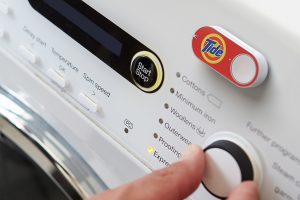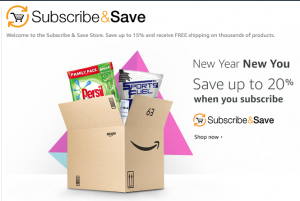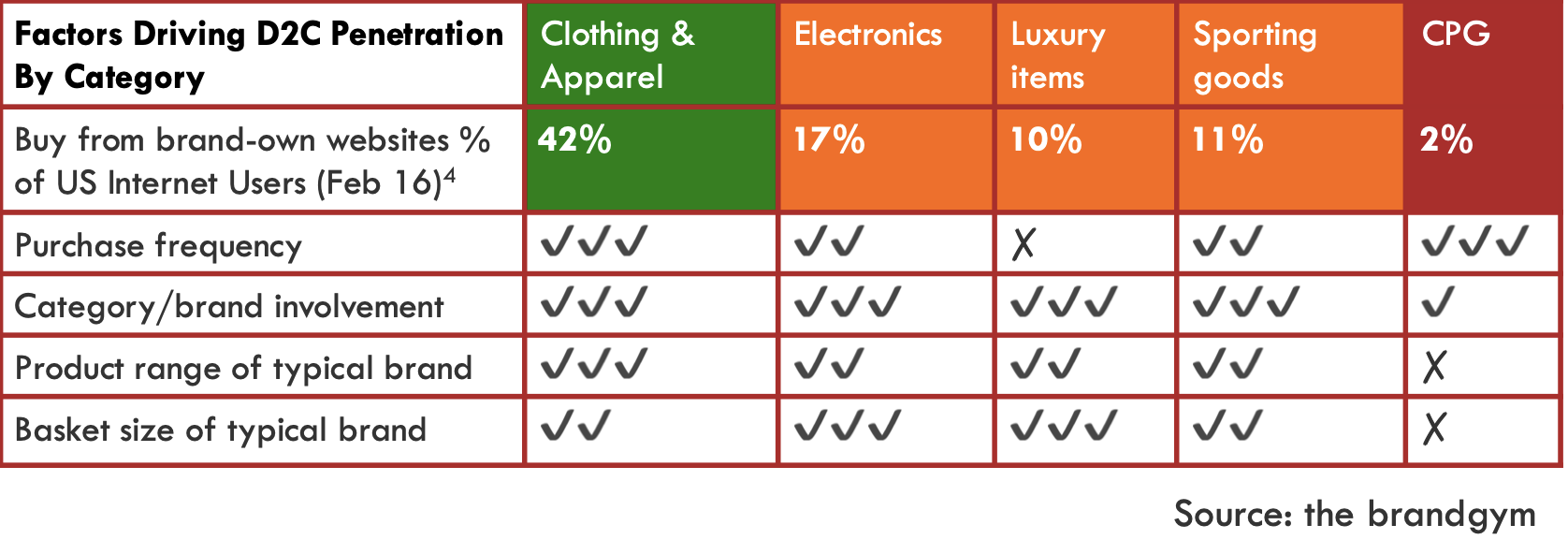Should you sell direct to consumers (D2C) and, if so, how?
“Should we sell direct to consumers (D2C)?” asked a consumer product goods (CPG) client in a growth vision workshop this week. Many companies are asking us the same question. And you can see why. Although e-commerce remains a niche channel for CPG in most regions (c.2% of sales in US and 6% in the UK, for example), sales are growing like a rocket: US online sales grew at an average 30% between 2015 and 2018, versus a measly 0.7% for offline sales1 . The success (at least in revenue terms) of brands like Harry’s and Dollar Shave Club has added fuel on the fire of excitement about D2C, with the latter being bought by Unilever for a juicy $1billion, as we posted on here.
However, D2C is not a route to take without a lot of careful thought. As a recent McKinsey article2 says, “There have been many misses and only a handful of hits among CPG companies’ forays into D2C.”
In this post we explore whether you should take this path to growth and, if so, how.
Step 1: SMS (sell more stuff) in existing online retail channels
Before rushing into D2C, we recommend that our CPG companies first optimise and amplify sales in their existing online retail channels. This includes online supermarkets, such as Tesco.com or Walmart.com, and of increasingly Amazon.
Why start here? Simply because online retailing is the core business of online retailers, whereas it isn’t for most CPG companies we work with. Amazon generate massive traffic to their site, whereas you would have to invest heavily to get even a fraction of this. In other words, we suggest you start by ’fishing where the fish are’.
P&G’s Tide is a good example of this strategy in action. Tide leads US online sales of laundry detergent with a 48% share, well ahead of the brand’s offline share of c. 38% (IRI, 52 weeks to Dec. 27)3 . This success reflects Tide being one of the first brands to use Amazon Dash buttons that allow you automatically order product when you’re running out.

Other ways to amplify online sales include ‘digital point-of-sale (POS)’, by optimising pack shots and text, search engine optimisation (SEO) and exploring the use of video to active your brand online. You can also explore being part of Amazon’s ‘Subscribe and Save’ program, where shoppers can set up recurring orders of items they regularly buy.

Step 2: Why would anyone buy?
Having optimised existing online retail channels, we then move on to the question of D2C.
The first critical question we ask clients is, “Why anyone should buy your brand’s D2C site, instead of using their favourite retail website?” If you can answer this question, a further consideration is channel conflict. You need to weigh up potential gains in D2C sales against potential losses from pissed off retail partners who don’t like you diverting sales from them.
We use a few criteria to help evaluate the potential of a brand in D2C:
- Frequency of purchase: D2C works better of your brand is bought on a regular basis, allowing the opportunity for a subscription-based service like Gillette’s Shave Club, that we posted on here
- Category involvement: people may want to spend time on your D2C site if you are in a high involvement category, with people wanting to spend time immersed in ‘the brand world’
- Personalisation: how big is the demand to customise/personalise your product?
- Product range: D2C makes more sense for a brand with a large product range, allowing people to buy multiple products in one visit, rather than a mono-product brand
- Basket size: the bigger the basket size, the more likely you can create a viable business model that delivers orders to customers without having to heavily charge for delivery, or at all
These factors help explain why only 2% of US internet users shop from CPG brands’ D2C sites4, a fraction of that seen for other higher involvement categories with wider ranges and higher basket sizes: see below. These numbers have of course been increased by the effects of Covid-19 enforced lockdowns. But the relative sizes are likely to stay the same (i.e. CPG much smaller).

One way some CPG companies are trying to make the D2C proposition more compelling is by grouping together multiple brand in their portfolio into a company online store, such as P&G Shop. This helps address the issue of basket size and product range, with free delivery on orders over $49. However, even then, its not obvious that shopper would want to use P&G Shop rather than simply shopping for their favourite brands on Walmart.com or Amazon.
Step 3: Show them the money
Assuming you make it past Step 2 and have an attractive value proposition for consumers, you then need to ‘think like a VC’ (venture capitalist) and critically assess the business model. A recent McKinsey article suggests what VCs look for in early stage D2C businesses2:
- High lifetime value (LTV), based on frequent repeat purchases and/or lengthy customer commitments (e.g. memberships, subscriptions)
- Low customer churn, owing to a compelling customer experience
- Low customer-acquisition costs, helped by high levels of word-of-mouth
In terms of specific metrics, they suggest you should be looking for:
- Avge basket size greater than cost of goods sold
- Gross margin/customer six times the cost of acquisition.
- Year-over-year growth rate of 50%+
- Capital investment break even in min. 4 years
- Consistent cash flow regardless of seasonal spikes
Step 4: Alternative routes to market
What if you have an attractive customer proposition (Step 2) but a crap business model (Step 3)? There are some alternatives to going it alone and building your own stand-alone D2C business.
First, you could operate your own D2C website, but out-source fulfillment and delivery to a partner. “Companies such as Boxed and Postmates can handle picking, packing, and delivery; start-ups like the UK-based Doddle and Happy Returns can manage returns,” explain McKinsey in their article mentioned above. You will still need to invest heavily to drive traffic to your site, and keep people coming back.
A quicker but more expensive option is to buy capabilities. You could but a company outright, as Unilever did with Dollar Shave Club. Or you can do what Mckinsey call “acquihire” talent: buy part or all of a company for its talent and know-how, rather than for its products. They give as an example NatureBox’s acquisition of Dean & Deluca’s product-development team to step-change capability in innovation and R&D.

In conclusion, there are some huge upsides from a D2C offer. Indeed, we voted Nespresso ‘Best brand in the world’ back in 2010 here, seeing this as the ultimate D2C brand. It has huge advantages over a classic CPG brand, including ownership of customer data, control of pricing and instant distribution of new products. However, Nespresso was born D2C brand from the start, over 20 years ago. The company has built D2C capabilities, refined the proposition and business model and has no channel conflict issues as it doesn’t (yet) sell through other retailers.
It’s a whole different ball game if you are a CPG company. First, you need to be sure you have a compelling D2C customer proposition that can win people away from online retail specialists. Second, you need to ‘show them the money’ by creating a viable business model. A better route may be to optimise and amplify your brand in existing online channels, whilst exploring options to buy D2C companies, ideally early in their lifecycle before the price becomes prohibitive.
Sources:
1.https://www.statista.com/statistics/419230/us-cpg-online-and-offline-sales/
4.Walker Sands Comunication via eMarketer, Feb 16


